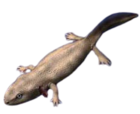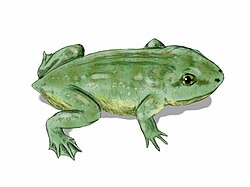| Dermophis | |
|---|---|
 | |
| Tapalcua ( Dermophis mexicanus ) | |
| Scientific classification | |
| Kingdom: | Animalia |
| Phylum: | Chordata |
| Class: | Amphibia |
| Order: | Gymnophiona |
| Clade: | Apoda |
| Family: | Dermophiidae |
| Genus: | Dermophis Peters, 1880 |
| Species | |
7, see text | |
Dermophis is a genus of worm-like amphibians [1] in the family Dermophiidae, the Neotropical and Tropical African caecilians. [2] [3] They are found in the Middle America between southern Mexico and northwestern Colombia. Common names Mexican caecilians or Neotropical caecilians are sometimes used for them. [2]



